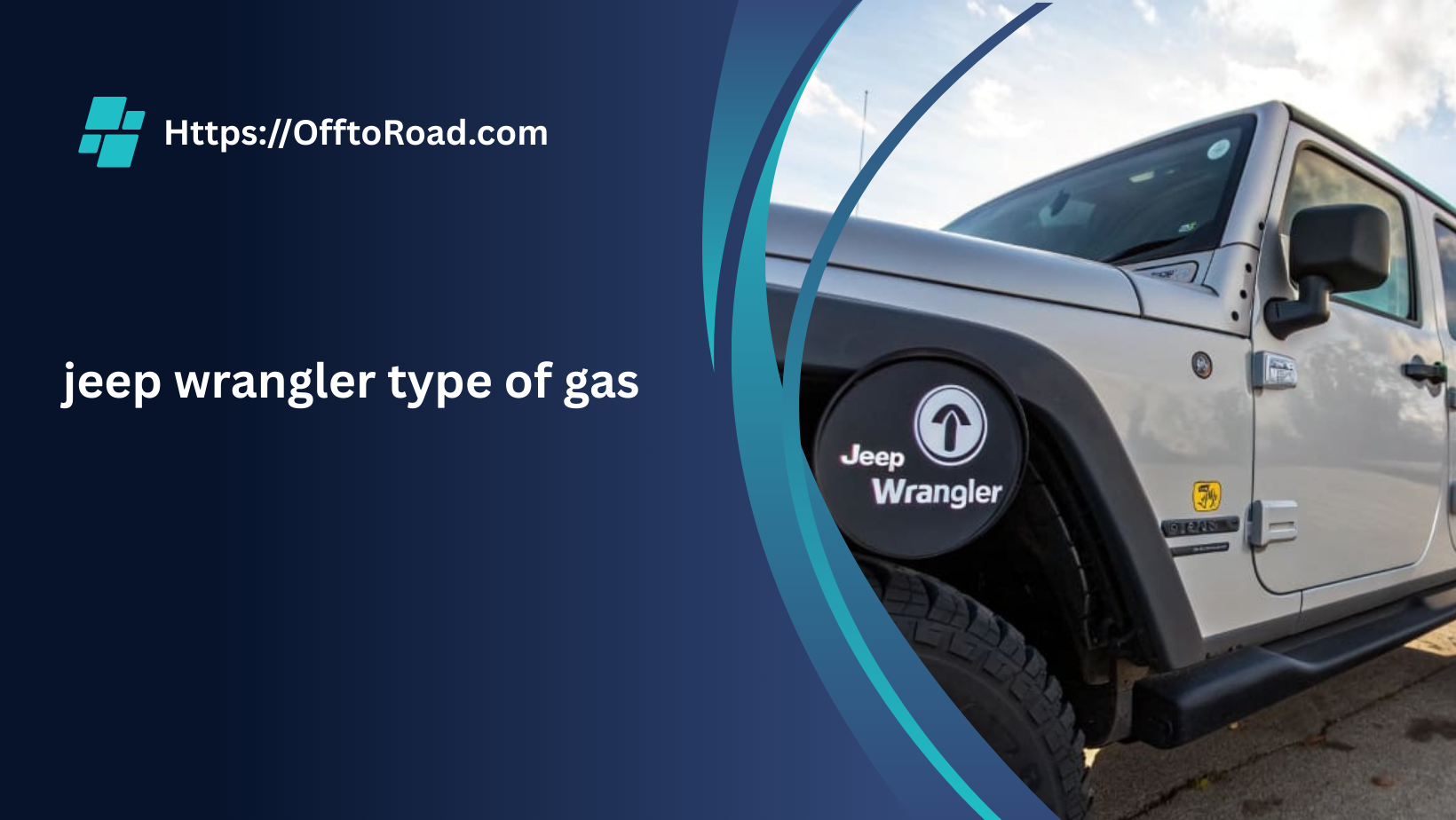The type of gas your Jeep Wrangler needs really depends on the engine. If you have a standard model, it usually runs on regular unleaded (87 octane). However, if your Wrangler has a turbo or a high-performance engine, it might require premium fuel or even diesel for the best performance.
In this simple guide, I’ll walk you through everything I’ve learned about what gas a Jeep Wrangler uses. I’ll keep it easy to understand, just like I would explain it to a friend.
Gasoline or Diesel? It Depends on Your Engine:
First things first — what engine do you have? That’s what decides what fuel you should use.
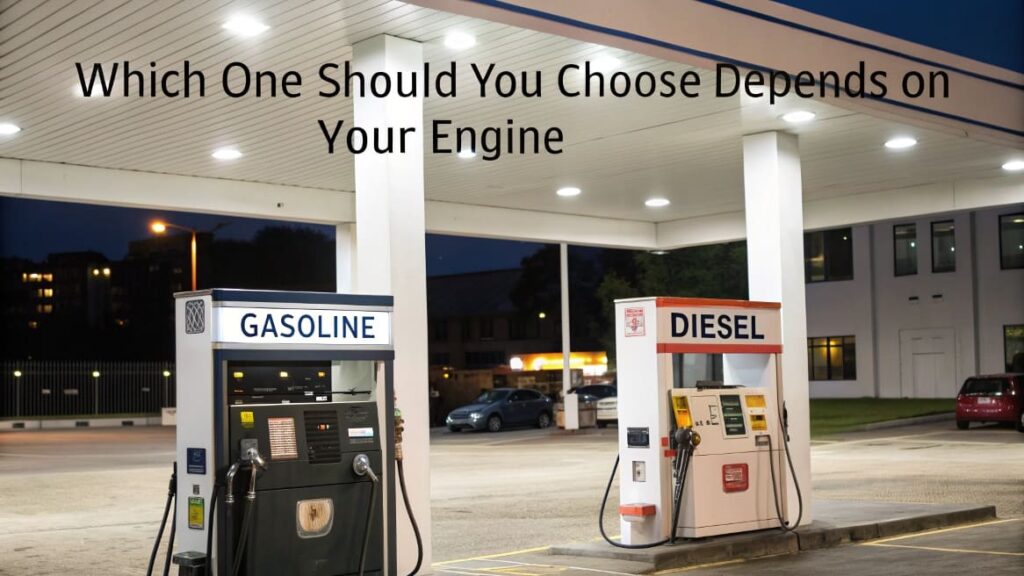
Here’s a super simple guide to help you figure it out:
| Engine | Recommended Fuel |
| 3.6L V6 | Regular unleaded (87 octane or higher) |
| 2.0L Turbocharged I4 | Regular (87) is fine — Premium (91+) is better for performance |
| 4xe Plug-in Hybrid | Premium gasoline (91 octane or higher) |
| 6.4L HEMI V8 (392) | Premium gasoline (91 octane or higher) |
| 3.0L EcoDiesel V6 | Ultra-low sulfur diesel (ULSD) |
Pro tip from me: Always double-check your owner’s manual or the label on your gas cap before you fill up. It takes one second and gives you peace of mind!
What If You Use the Wrong Gas? (Don’t Panic)
We’ve all been there—busy, distracted, and maybe grabbing the wrong fuel by accident. So, what happens if you use the wrong gas? Here’s the thing:
Regular gas in a Jeep that recommends premium:It’s not the end of the world. Your Jeep will still run, but you might feel a slight drop in power or notice worse fuel economy.
Premium gas in a Jeep that only needs regular: You’re just spending extra money for no real benefit. No harm done though.
Gasoline in a diesel engine (or diesel in a gas engine): This is where it gets serious. That can cause big engine problems — and trust me, the repair bill won’t be small.
Should You Use Premium Gas for Better Performance?
Now, you might be asking yourself — just like I did — “Will premium gas make my Jeep faster or stronger?”
Here’s what I found after some digging:
- If your Wrangler doesn’t require premium, you probably won’t notice much of a difference day-to-day.
- If you’ve got the 2.0L Turbo engine, using premium (91 octane) can help with performance — especially if you’re towing, off-roading, or driving in hot weather.
For me? I use regular gas most days, but when I know I’ll be pushing my Jeep harder, I’ll treat it to premium.
Also Read: https://offtoroad.com/jeep-sahara-gas-type/
How Big Is the Gas Tank in a Jeep Wrangler?
Just so you know how far you can go between fill-ups, here’s a quick breakdown:
| Wrangler Model | Fuel Tank Size |
| 2-door | ~17.5 gallons |
| 4-door (Unlimited) | ~21.5 gallons |
Plenty of fuel for road trips or weekend trail adventures, if you ask me!
What’s the Fuel Economy Like?
Alright — now let’s talk about how far you can go on a tank. Here’s a rough idea, just to give you a ballpark:
- 2.0L Turbo I4: ~21 MPG city, 24 MPG highway
- 3.6L V6: ~17 MPG city, 23 MPG highway
- 3.0L EcoDiesel: ~22 MPG city, 29 MPG highway
- 6.4L V8 (392): ~13 MPG city, 17 MPG highway
Just a heads-up — if you’ve added big tires, a lift kit, or you’re doing serious off-roading (like I have), your MPG might dip a bit. It’s part of the Jeep life!
What Affects Jeep Wrangler Gas Mileage?
Now that you know what gas to use, maybe you’re wondering — like I did — “What really affects how far I can go on a tank?” Let’s break it down in a super simple way.
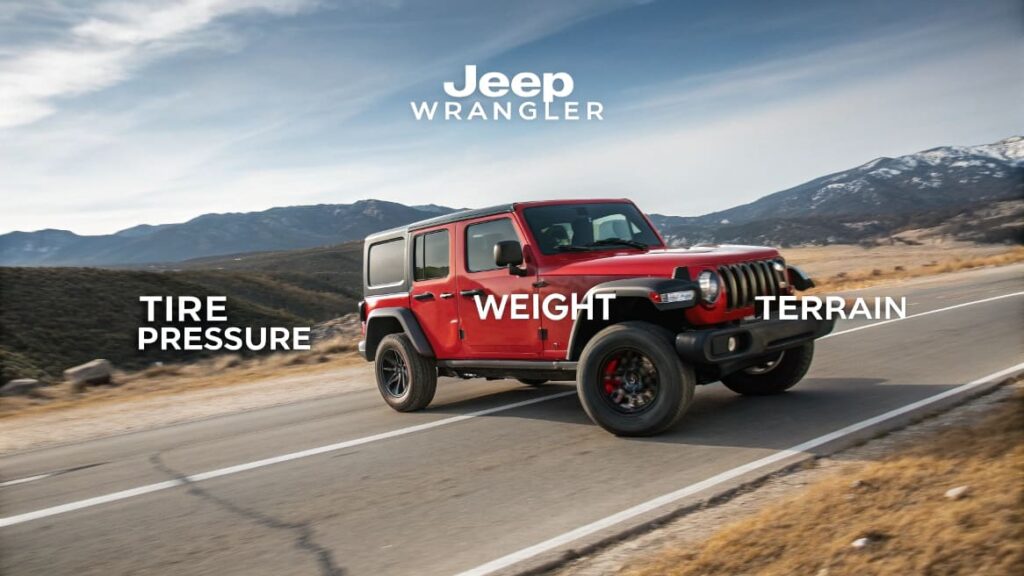
Engine Type:
When it comes to engine type, it’s really the heart of how much fuel your Jeep will use. To start with, smaller engines like the 2.0L Turbo or the 3.0L EcoDiesel tend to be more fuel-friendly. In my experience, they strike a good balance — giving you enough power while helping you stretch out your fuel tank a bit longer.
But on the other hand, if you’ve got something like the 6.4L V8 under the hood, things change. Sure, you’ll get a lot more power and performance, but you’ll also notice it drinks more fuel. Simply put, smaller engines are easier on gas, while bigger engines give more muscle at the cost of lower mileage.
Transmission and Drivetrain:
When it comes to transmission and drivetrain, a few things can impact your fuel efficiency. For example, if you’re driving a manual transmission, you actually have the potential to save some gas — but only if you’re really careful with how you drive. Smooth, steady shifting is key. On the flip side, automatic transmissions are pretty convenient, but they might use up a little more fuel, especially if you’re speeding or stop-and-go driving.
Now, let’s talk about 2WD vs. 4WD. If you’re cruising around on 2WD, you’re going to burn less fuel since it only powers two wheels. But when you switch to 4WD, all four wheels are engaged, which can lead to higher fuel consumption. My personal tip? I usually keep it in 2WD unless I’m off-roading or need extra traction in tough weather — it’s a simple way to save a little more at the pump.
Tire Size and Weight:
When it comes to tire size and weight, you might not realize how much they can influence your fuel economy. Bigger tires are awesome for off-roading and adding that rugged look to your Jeep, but they come with a catch. They’re heavier, which means your engine has to work harder to move them. And, as a result, you’ll likely see a drop in MPG.
I can speak from experience here – after upgrading to larger tires, I definitely noticed a decrease in fuel efficiency. But honestly, for me, the trade-off was worth it because those bigger tires gave me the extra grip I needed for off-roading adventures. So, while bigger tires and extra weight can lower your fuel economy, it’s all about finding that balance. If you’re cool with the decrease in MPG, go for it! Just keep in mind that your Jeep’s fuel efficiency may take a little hit.
Driving Habits:
When it comes to driving habits, they can really make or break your gas mileage. I’ve noticed that smooth and steady driving goes a long way in conserving fuel. Instead of slamming the gas pedal or braking hard, I try to keep things relaxed and consistent. It makes a big difference in how much fuel I’m using, especially over time.
On the flip side, if you’re always speeding up quickly or making sudden stops, you’ll see your fuel efficiency take a hit. That’s something I had to learn the hard way! Another factor I’ve learned about is the impact of short trips and cold weather. When the engine doesn’t fully warm up, it uses more fuel, so those chilly mornings or quick runs around town can really add up.
So, if you want to get the most out of your tank, slow down a bit and focus on keeping a steady pace. Not only will it help save fuel, but you’ll also avoid that annoying constant need to stop at the pump!
Terrain and Weather:
Off-roading, steep hills, mud, sand, snow, strong winds — all of that makes your engine work harder and use more fuel.
Also Read: https://offtoroad.com/are-jeep-wranglers-good-on-gas/
What Fuel Should You Use in a 2024 Jeep Wrangler?
If you’re driving a shiny new 2024 Wrangler (lucky you!), here’s a clear, easy table to guide you:
| 2024 Wrangler Engine | Recommended Fuel |
| 3.6L V6 | Regular unleaded (87 octane or higher) |
| 2.0L Turbo | Regular (87) is fine — Premium (91) is better |
| 4xe Plug-in Hybrid | Premium gasoline (91 octane or higher) |
| 6.4L HEMI V8 (392) | Premium gasoline (91 octane or higher) |
| 3.0L EcoDiesel V6 | Ultra-low sulfur diesel (ULSD) |
3.6L Pentastar V6 (The Classic Choice):
- First up, if you went with the trusty 3.6L V6, you’re in luck — it’s easy.
- Use regular unleaded gasoline (87 octane or higher).
- Yep, that’s it. Regular gas will do the trick just fine here. No need to overthink it or spend extra on premium unless you just feel like it.
2.0L Turbocharged I4 (The Peppy Option):
Now, if you’ve got the 2.0L turbo engine, let’s take a closer look. This one’s got a little more kick.
The manual says 87 octane is okay…
But here’s where it gets interesting: a lot of Wrangler owners (and I’ve noticed it myself) say that premium gas (91 octane or higher) makes this engine feel a bit smoother and stronger. Especially when it’s hot out, you’re towing, or you’re heading off-road.
4xe Plug-in Hybrid (Gas + Electric = Extra Cool):
- Alright, now if you’re behind the wheel of the 4xe Plug-in Hybrid, here’s what you need to know.
- It requires premium gasoline (91 octane or higher).
- Since this model combines electric power and a gas engine, premium fuel helps both systems work together smoothly and efficiently.
6.4L HEMI V8 (Rubicon 392 — The Powerhouse):
- Now, for those of you who went all-in on the Rubicon 392 with the monster 6.4L HEMI V8, you already know this beast means business.
- Recommended fuel: premium gasoline (91 octane or higher).
That big V8 is all about power and performance — premium gas keeps it running at its absolute best.
3.0L EcoDiesel V6:
Last but not least, if you chose the 3.0L EcoDiesel, you’ll need something a little different.
Use ultra-low sulfur diesel (ULSD).
Just make sure the diesel pump says ULSD and you’re good to go.
Let’s Wrap It Up (Quick Table for Easy Reference)
| 2024 Wrangler Engine | Recommended Fuel |
| 3.6L V6 | Regular unleaded (87 octane or higher) |
| 2.0L Turbo | Regular (87) is fine — Premium (91) is better |
| 4xe Plug-in Hybrid | Premium gasoline (91 octane or higher) |
| 6.4L HEMI V8 (392) | Premium gasoline (91 octane or higher) |
| 3.0L EcoDiesel V6 | Ultra-low sulfur diesel (ULSD) |
What Grade of Gas Is in the Jeep When It’s Delivered?
So, you just got your hands on a brand-new Jeep Wrangler — how exciting! Naturally, one of the first questions that might pop up is:
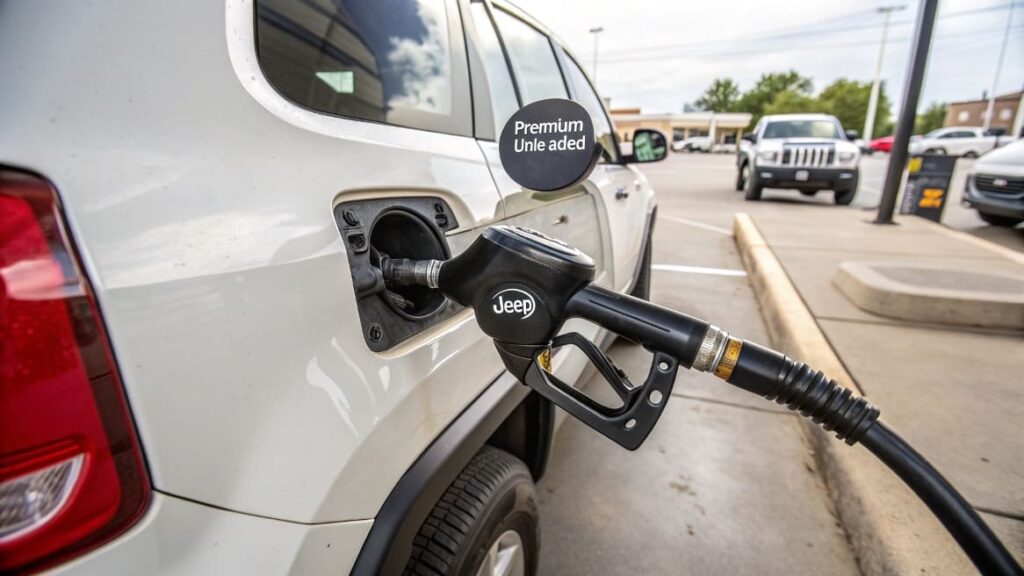
“What kind of gas did they put in my Jeep before I drove it off the lot?”
I totally get where you’re coming from. When I first picked up my Jeep, I wondered the exact same thing. So, here’s the scoop:
What Gas Do They Put in It?
When you drive off the lot, most dealerships fill your Jeep with regular unleaded gasoline (87 octane) — especially if your Wrangler runs just fine with regular fuel. That said, if you’ve got a higher-performance engine, like the 4xe Hybrid or the 6.4L HEMI V8, they’ll make sure to put in premium fuel (91 octane or higher) to keep things running smoothly.
To make it clearer:
- If you’ve got the 3.6L V6 or 2.0L Turbo, regular gas (87 octane) is typically used since both engines are happy with that fuel grade.
- If you have the 4xe Plug-in Hybrid or the 6.4L HEMI V8 (Rubicon 392), the dealership will usually go for premium (91 octane or higher), because these engines perform best on higher-octane fuel.
Here’s a little story from me:
When I got my Wrangler, the dealer said they filled it with regular unleaded — no surprises there. But when a friend of mine picked up a Rubicon 392, the dealer mentioned they made sure to top it off with premium right from the start.
Why Do They Use Regular Gas?
Now, you might be thinking, “Why don’t they just put in a premium from the start?” Good question!
The reason most dealerships fill up with regular gas is simple:
- It’s more affordable
- It’s good enough for a quick test drive or delivery
- It’s the most common fuel type, so there’s less guesswork for the dealer
Since you’re not likely towing or taking your new Jeep on crazy adventures the minute you drive off the lot, regular unleaded does just fine to get you going.
Also Read: https://offtoroad.com/how-much-is-it-to-paint-a-jeep-wrangler/
What Should You Do After Delivery?
Once you’re on the road, it’s a good idea to switch to the recommended fuel for your engine. If your Jeep calls for premium, you might want to start using that — it’ll help your engine run at its best, especially for long drives, towing, or rougher terrain.
Pro tip from me:
Quick Recap (Because Who Doesn’t Like a Summary?)
| Your Engine | Fuel Likely at Delivery | What You Should Use Next |
| 3.6L V6 | Regular (87 octane) | Regular (87 octane or higher) |
| 2.0L Turbo | Regular (87 octane) | Regular (87) OR Premium (91+) for better performance |
| 4xe Plug-in Hybrid | Premium (91 octane or higher) | Premium (91 octane or higher) |
| 6.4L HEMI V8 (392) | Premium (91 octane or higher) | Premium (91 octane or higher) |
| 3.0L EcoDiesel | Ultra-low sulfur diesel | Ultra-low sulfur diesel |
What Gas Do I Use in My Jeep?
Haha, I love the relaxed vibe of your question! So, if you’re asking about what gas I personally use, here’s how it usually goes:
For Everyday Driving: Regular Unleaded (87 Octane):
For most of my daily driving, I stick with regular unleaded (87 octane). It’s perfect for just getting around the city, running errands, or even the daily commute. Plus, it’s more affordable and does the job without any hassle. So, for the usual everyday trips, regular gas is my go-to.
When I Need a Boost: Premium (91 Octane or Higher):
But, here’s the thing — when I’m planning a road trip or doing some off-roading, I like to switch it up and go with premium (91 octane or higher). Why? Well, premium gas gives me that extra performance boost, especially if I’m pushing the Jeep harder or tackling tougher terrain. It just feels like the Jeep is running at its best when I go with premium for those kinds of trips.
What Works for Most People: Regular Gas?
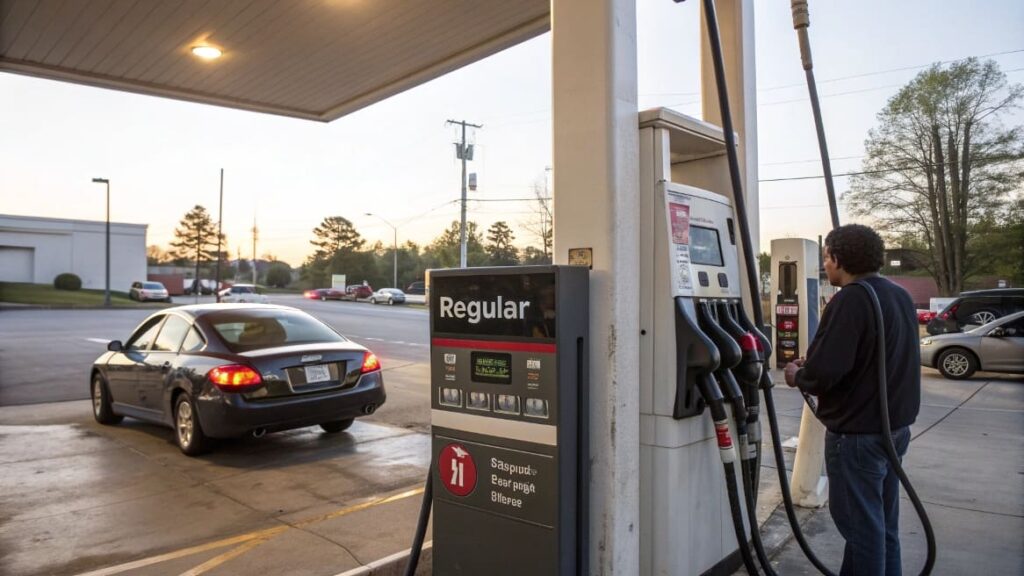
That said, most people can get away with using regular gas for day-to-day driving, and it’ll keep everything running smoothly. It’s cost-effective and reliable for your typical drives, like commuting to work or heading out on weekend errands.
When is Premium Gas Worth It?
Now, if you have a higher-performance engine or plan on doing something like towing or going off the beaten path, premium can make a noticeable difference. It’ll give you that extra power and help your engine perform better when you need it the most.
The Best Guide? Your Jeep’s Owner’s Manual
And, of course, if you’re ever unsure, the owner’s manual is your best friend! It will tell you exactly what kind of gas is recommended for your specific Jeep model. That way, you can always be sure you’re treating your Jeep the way it deserves.
FAQ’s
1.Can I Use Regular Gas in a Jeep Wrangler That Requires Premium?
Yes, you can use regular gas, but it’s not ideal. Your Jeep may run, but you’ll notice lower performance and reduced gas mileage. To get the best out of your Jeep, always go for premium fuel if that’s what it recommends.
2. Does Driving Style Affect My Jeep’s Gas Mileage?
Absolutely! Smooth driving helps conserve fuel, while aggressive acceleration and hard braking waste gas. If you want better fuel economy, try to drive steadily and avoid rapid stops and starts.
3. How Often Should I Check My Jeep’s Owner’s Manual for Fuel Type?
It’s a great idea to check your Jeep’s owner’s manual every so often. It’ll remind you of the recommended fuel type and any other important maintenance tips. A quick look ensures you’re using the right fuel to keep your Jeep running smoothly.
4. Will Bigger Tires Affect My Jeep’s Gas Mileage?
Yes, bigger tires can lower your Jeep’s gas mileage. They add extra weight and resistance, so your engine works harder. If you’re okay with the trade-off for performance or looks, then go for it, but expect a slight decrease in MPG.
5. Does Weather and Terrain Impact My Jeep’s Fuel Economy?
Yes, driving in tough conditions like snow, mud, or uphill can decrease your fuel efficiency. Extreme temperatures, hot or cold, can also affect how much gas your Jeep uses. If you’re off-roading or in harsh weather, don’t be surprised by lower MPG.
Conclusion
Choosing the right gas for your Jeep Wrangler depends on your engine type. Regular gas works for most models, but premium fuel is best for high-performance engines like the 2.0L Turbo or the Rubicon 392. Always check your owner’s manual to make sure you’re fueling your Jeep correctly for optimal performance and longevity.
